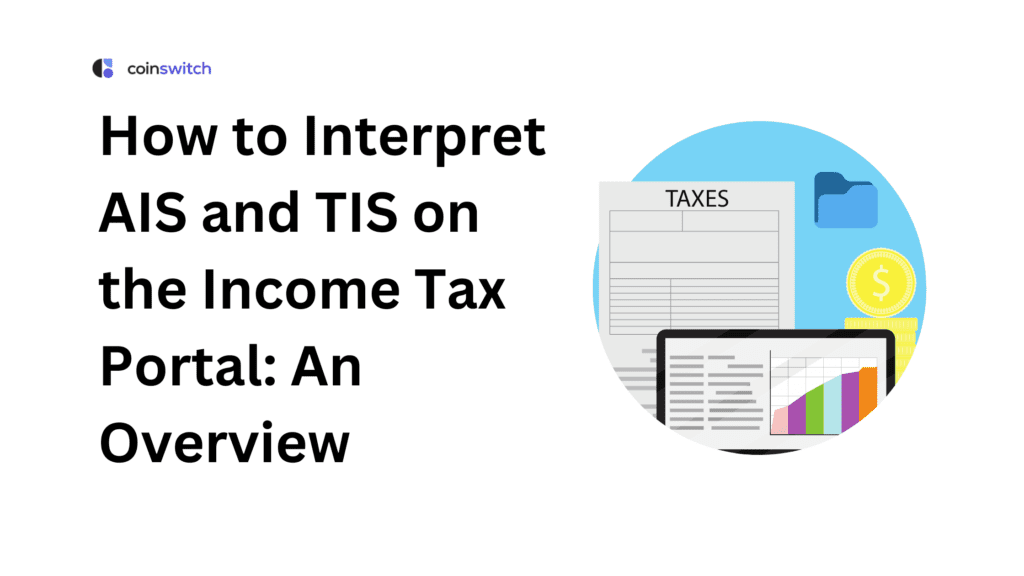The Income Tax Department of India has offered AIS and TIS to assist taxpayers in checking and accessing their financial data. AIS refers to the Annual Information Statement, and TIS means Taxpayer Information Summary, both of which are available on the Income Tax portal. They provide information on income, TDS, interest, and investments, among other financial activities. The AIS income tax tool can help you verify whether your records match those in your tax return.
TIS provides a summary of your AIS financial data. The two help enable more accurate tax filing transparently. Every taxpayer should regularly review AIS and TIS. This blog post is a guide on how to read AIS and TIS on the income tax portal.
What is the Annual Information Statement (AIS)?
The Annual Information Statement (AIS) is a comprehensive compilation of a taxpayer’s financial data. The Income Tax Department provides it, and the AIS displays all the income and financial transactions done by a taxpayer in a financial year. These are salary, interest income, dividends, transactions in shares, and details of mutual fund investments.
The AIS enables taxpayers to check and counter-check their income information before filing their income tax returns (ITR). It also contains details about tax deducted, tax paid, and any possible refunds. The purpose of the AIS income tax is to promote greater transparency and facilitate the effective filing of returns.
The AIS is accessible on the Income Tax e-filing site. To access it, a taxpayer should log in and select the tab Annual Information Statement. One should go through the AIS, and taxpayers can send online feedback if there are any mistakes.
Form 26AS is not the same as AIS. Form 26AS displays only TDS and TCS, whereas AIS gives a general overview of all financial transactions. Taxpayers can make sure that all their income is reported correctly using the AIS income tax tool. This minimizes the risk of mismatch alerts from the tax department and facilitates easier tax filing.
Read More: Understanding Per Capita Income: How it is Calculated and What Does it Indicate?
Understanding the Taxpayer Information Statement (TIS)
The Taxpayer Information Summary (TIS) is a document issued by the Indian income tax department. It provides details of your financial dealings during a financial year. TIS is meant to enable taxpayers to input their income tax returns. It presents information from various sources, including banks, mutual funds, stock exchanges, and employers.
The TIS Income Tax statement consists of two sections. The initial portion indicates the processed values. The second segment represents source-wise information as drawn by the various reporting entities. This helps taxpayers cross-check the information to be filed.
TIS contains details of salaries, interests, dividends, rents, business income, and foreign income. It also discloses large transactions such as buying property or spending on a credit card. Your TIS is accessible in the Income Tax E-filing portal. The TIS will enable you to identify discrepancies between your actual earnings and the information provided to the department.
In the event of any incorrect entry, you can report it, which reduces the likelihood of receiving a notice. TIS Income Tax statement promotes transparency and also leads to fewer errors when filing returns. It can be helpful to both employees who receive a salary and self-employed entrepreneurs.
Read More: Who is a SEBI Registered Investment Advisor?
What Is the Difference Between AIS and TIS in Income Tax?
Both AIS and TIS are tools that are available on the Income Tax Department portal. Although the two are connected to your income information, they have different purposes and are applied at varying tax filing periods.
You need to understand the distinctions between AIS and TIS to file your tax returns accurately.
The Aim of AIS and TIS
AIS is an elaborate documentation of financial transactions in the current financial year. It provides an accurate overview of taxpayers’ financial transactions. On the other hand, TIS is a brief overview of the content in AIS. It also helps taxpayers interpret the information without hassle and file their ITR.
Level of Detail
AIS contains specific details on various transactions, including interest earned, dividends, shares, mutual funds, and foreign remittances. TIS includes summary details only. TIS Income Tax displays cumulative values, which simplifies the review process, particularly for first-time filers.
Portal Accessibility
AIS can be accessed as an independent tab in the services section of the Income Tax portal. You may save it as a PDF. TIS is directly adjacent to the AIS on the portal and can be accessed seamlessly.
· Presentation Format
AIS is the extension of Form 26AS. In other words, the Annual Information Statement (AIS) is a comprehensive view of information for a taxpayer displayed in Form 26AS. It is organized and segregates each transaction by separate headings. AIS income tax format is fairly long.
TIS operates on a summarized dashboard. There are fewer tables and more figures. It is more readable and can be grasped easily by ordinary taxpayers.
User Purpose
AIS is primarily applicable to professionals, tax advisors, or individuals checking each transaction. It enables a detailed cross-check of third-party information.
TIS is more beneficial to individual taxpayers who file returns independently. It is designed to facilitate the use of prefilled ITR data and enable quick corrections in case they are necessary.
Dynamic Nature vs. Static Nature
Once AIS is generated, it is fixed. Upon being released, it will not automatically change.
TIS value may be updated automatically after the feedback is submitted via AIS processing. It may involve corrections or revised values if the response submitted by the taxpayer.
Technical Terms and Complexity
AIS contains more technical tax terminologies and formats that will likely bewilder a non-technical user. It includes classifications, source information, and tax deducted. On the other hand, TIS does not use much jargon; instead, it simplifies the information and uses simple language, making it easily accessible to the average taxpayer.
Tax Compliance Significance
AIS income tax plays a significant role in checking the accuracy of third-party data. It often helps preempt tax department notices. The role of TIS is secondary. It assists taxpayers in quickly identifying any income that has gone unnoticed in their ITR and informs them about their tax liability based on the income summary.
Correction Mechanism
If the taxpayer notices any errors in AIS, they can provide comments on the corrections to be made through the portal. The feedback routine is precise and procedural. After processing, AIS automatically reflects the corrections in the TIS income tax. The taxpayer does not need to provide feedback on TIS separately. It is updated in accordance with AIS corrections.
How to Use AIS and TIS?
Proper use of AIS and TIS would enable you to handle your tax information with ease. In the AIS Income Tax report, all your income and financial transactions are displayed. Compare your income, salary, interest, and transactions with this report to ensure they match your records. This will help prevent any mismatch during tax filing.
It is also possible to check information about investments, such as mutual funds, dividends, or the sale of stocks, with the help of AIS Income Tax. There are options to give feedback in case there are errors using the AIS portal.
The TIS Income Tax statement provides a simplified overview of your tax information. It indicates total income, tax paid, undrawn demand, and reimbursement. Your TIS Income Tax should be checked regularly so that you are aware of your dues to be paid to the government or any refund you may be eligible for.
Whenever you are filing your income tax, compare AIS and TIS. This will ensure that everything is in the right place and that your tax has been filed correctly. It also reduces the probability of receiving notices from the tax department.
Conclusion
The interpretation of AIS and TIS on the Income Tax portal helps you file your income tax returns correctly. AIS income tax displays specific records about your income and transactions. TIS gives a simplified version that is easy to refer to. These two should be cross-checked at all times before filing returns.
This eliminates the liabilities and the likelihood of receiving an income tax notice. Correct usage of AIS and TIS would mean transparency and aid in maintaining tax compliance. It also helps with improved financial planning and record-keeping.
FAQs
1. How to read AIS and TIS?
Log on to the income tax portal, locate the AIS section, and then download AIS and TIS. Check the reported income, TDS, interest, and dividends, and match them with your details. Make sure that they match your personal records before you file your income tax returns.
2. What is the difference between AIS and TIS?
AIS is a comprehensive list of financial transactions. TIS gives a summarized impression. AIS displays sources and amounts; TIS displays processed values for use in filing taxes, which is easier to understand.
3. What is TIS in the income tax portal?
Taxpayer Information Summary is referred to as TIS. It provides a brief overview of all financial transactions, including income, interest, dividends, and tax payments to the Income Tax Department, enabling taxpayers to quickly and accurately verify essential information when filing their taxes.
4. How to read an AIS file?
The PDF that is downloaded is password-protected. You should enter the combination of PAN (in lower case) and date of birth in the case of an individual taxpayer or date of incorporation/formation in the case of a non-individual taxpayer in the format ddmmyyyy without any spaces to open the file.








